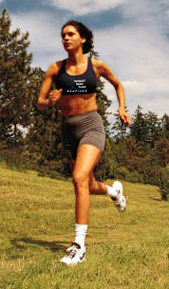By Krissy Brown
04 Feb, 2025
Clinical Case of the Week, Medical Advisory, Physical Therapy Tips
ankle pain, exercise, injured, Knee pain, Leg pain, Low Back Pain, Nick Rinard physical therapy, Physical Therapy, running, treatment
By MiKayla Sanocki, SPT
Did you know a back problem can cause symptoms such as pain, decreased strength and decreased sensations into the thigh, calf, ankle or foot? Physical therapists trained in Mechanical Diagnosis and Therapy (MDT) here at Nick Rinard Physical Therapy can determine during the evaluation if any of these lower leg symptoms are coming from your back.
Check out this bizarre clinical presentation we treated at Nick Rinard Physical Therapy:
She did not remember any trauma to the ankle
The patient came to physical therapy for an “ankle sprain” that occurred 3-months earlier. She stated she woke up unable to put any weight on her right foot. The pain had remained constant in her ankle, so bad at times that she couldn’t walk! Upon further questioning, the patient revealed what she had been doing the day before: She had driven 2 hours, on her way home from helping clean a house. During the drive she had discomfort in her buttock and hamstring that made her want to pull the car over to stretch. She did not remember any trauma to the ankle, however, but the ankle pain was the only pain she was experiencing now.
Her ankle pain has caused her to quit running and yoga — two of her favorite activities.
Mechanical Evaluation finds cause in spine
During the mechanical evaluation we found that certain directions of low back movements decreased the pain in her ankle. After being sent home with 1 simple exercise to perform every waking hour – which she did perfectly – she returned within 24 hours reporting 90% recovery in pain! Over the next week we were able to progress her exercises and now the patient reports no ankle pain at all. In only 4 visits we were able to abolish her ankle pain, and she is now getting back to running and yoga!
The patient reports, “I now have the tools to prevent the return of my back and ankle pain”.
Treatment at Nick Rinard Physical Therapy vs Traditional PT
In contrast to MDT, traditional PT would not have uncovered the spinal cause of the patient’s ankle pain. Treatment would have been ineffective since it would have focused only on trying to treat the symptom.
Do you know if your pain in the legs or arms could be coming from the spine? Schedule your evaluation at Nick Rinard Physical Therapy and find out!
More
“I had seen a previous PT for a few visits and didn’t feel any better – I thought my sprained ankle was a lost cause.
On my first visit with Dr. Rinard, he diagnosed my issue and provided immediate relief.
I had several PT appointments and felt constant improvement.
I’m back to running and playing volleyball and I could have done it without his help/patience/understanding and knowledge.
Thank you so much! ”
Gloria
More
Sometimes knee pain is actually a back problem! Nick Rinard Physical Therapy makes sure to get the correct diagnosis every time!
“I had continuing knee problems and had seen other physical therapists.
This felt like my last efforts to resolves issues if I could.
With Katie’s awesome attention and care, she weeded through my knee problems and determined it might be a back issue, based on one of our conversations.
Our plans switched to restoring my back and core.
As a result, knee issues decreased!! I am back to running longer distances with no knee issues!
I have the tools/exercises to continue strengthening!
(Teagan was also an amazing student intern – loved that Nick and Katie took her on and helped her hone her skills. She took everything on very well.)”
Jennifer
More
This is about a shoulder derangement that was identified, and fixed in 10 minutes. But there is more background to the story.
Debbie (a fictitious name for the real person) was training for her first 1/2 Marathon, held in Portland, Oregon. About 3 weeks before the event she presented to physical therapy complaining of pain behind the knee. Such an injury so close to a sporting event is automatically worrisome because it threatens participation. Both Debbie and I were concerned that it could stop her from being able to run the 1/2 marathon!
I performed a mechanical assessment per the McKenzie Method, combined with Cyriax style selective tissue tension tests, and diagnosed the knee pain as “semitendinosis tendinitis”, named according to Laslett nomenclature. It is a lesion of the hamstring.
Although Debbie had good hamstring flexibility, I deduced, based on her history (she was certified as a yoga instructor), that she normally had more. Treatment consisted of stretching out her hamstrings, combined with manual deep tissue mobilization of the hamstring muscle belly. It worked!
She ran the 1/2 Marathon without any knee pain! However, her shoulder became painful during the event! She asked me to look at it 4 days later since it had not subsided on its own.
She presented with what appeared to be a clear contractile lesion of the infraspinatus tendon, with a weak resisted test of lateral rotation. However, there were two pieces of information that were inconsistent with this conclusion. 1) Resisted shoulder flexion was painful with the elbow positioned behind the body, but painless with the elbow in front. 2)
There was no tenderness at all near the infraspinatus tendon, which would be typical , but not required, for the lesion to be harbored in the infraspinatus tendon.
Further mechanical assessment was needed, and this followed the McKenzie Method of Mechanical Diagnosis and Therapy. Repeated tests would differentiate between a derangement and other possible pathologies. I surmised that the arm bone could have been malpositioned in the shoulder girdle from Debbie pumping her arms while running. The logical step was to reverse the activity of arm pumping and correct the derangement. So I instructed her to reach all the way across her body with that arm and then push it further using the other hand. This became less and less painful until there was no pain! Furthermore, it resulted in much less pain produced by resisted flexion afterward! Another exercise–that of rotating the arm bone back into place–worked well also, virtually rendering all prior painful tests, painless!
Needless to say, Debbie was very pleased with both the rapid results with her shoulder, and grateful that her knee pain was treated in time for her to complete her 1/2 marathon!
More

